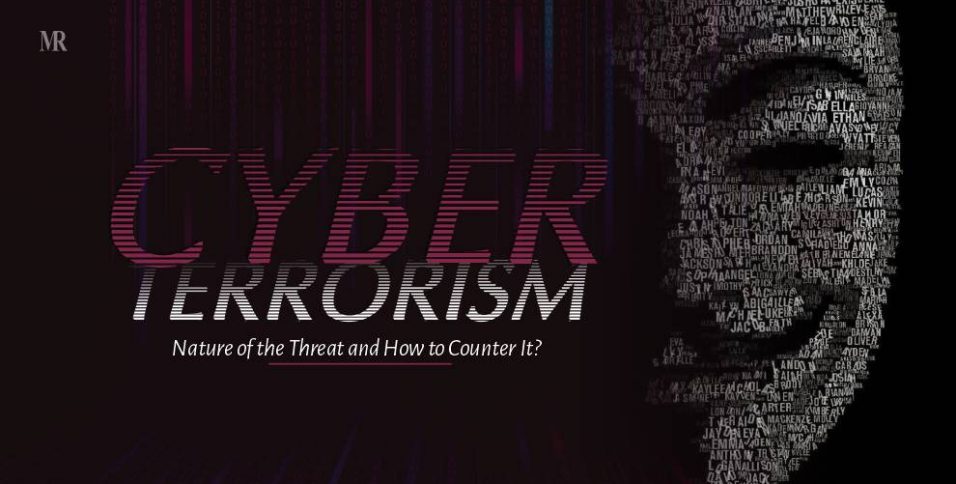Cyber Terrorism is a threat that will only tend to grow with time like technology. In the past, we have seen many cases involving cyber terrorism which were enough to spread awareness globally.
Recently in February 2020, in the days leading up to Russia’s invasion of Ukraine, the websites of the Ukrainian Cabinet of Ministers and the Ministries of Foreign Affairs, Infrastructure, and Education were all down. Wiper malware was also used to infiltrate the networks of two government contractors and one Ukrainian financial institution.
The availability of various things has become simpler with the growth of technology and the capacity to get anything done with the aid of the internet. But simultaneously, we grow increasingly vulnerable to cyberattacks as we are reliant on technology.
What is a Cyber attack?
A cyber attack is a cybercriminal attack that uses one or more computers to target a single or numerous computers or networks. A cyber attack can be used to intentionally disable machines, steal data, or launch additional attacks from a compromised computer. Similarly, when a cyber-attack is done with the motive of mass destruction or targets it is called Cyber terrorism.
What Exactly Is Cyber Terrorism?
The fusion of cyberspace and terrorism is known as cyber terrorism. It refers to illegal assaults and threats of attacks on computers, networks, and the information stored on them that are carried out to intimidate or compel a government or its citizens in the pursuit of political or social goals.
Cyber terrorism is usually described as any intentional, personal, politically motivated attack on information systems, programs, or data that threatens or causes harm. And if you’re not careful enough, you can just be the next victim of cyber terrorism on the Internet.
Any cyber assault that intimidates or creates fear in the target population is sometimes included in the term. The most common method used by attackers is to damage or impair essential infrastructure.
Cyber terrorism poses a larger threat than ever before. The Center for Strategic and International Studies (CSIS), a nonprofit policy research organization that is bipartisan, documented 118 notable cyber assaults that happened which were confirmed to have occurred earlier in 2021. As defined by the CSIS, significant assaults include those that target government organizations, defense, and high-tech industries, as well as economic crimes with losses of more than $1 million.
The U.S. Federal Bureau of Investigation (FBI) believes a cyber-terrorist attack is a sort of cybercrime that is specifically intended to hurt people physically. However, governments and the information security sector cannot agree on what makes up a cyber-terrorist act. The banking industry, military sites, power plants, air traffic control centers, and water systems are all plausible targets for cyber-terrorists, according to the US Commission on Critical Infrastructure Protection.
Examples of Cyber Terrorist Activity:
Computer servers, other devices, and networks that are visible on the public internet are used to carry out cyber terrorist activities. Government and other restricted networks are frequently targeted.
The following are some examples of cyber terrorism:
- Major Websites are disrupted: The goal is to cause public annoyance or to halt traffic to websites that carry content that the hackers don’t agree with.
- Critical infrastructure systems are disrupted: Threat actors attempt to disable or disrupt cities, create a public health catastrophe, jeopardize public safety, or cause widespread fear and deaths. Cyber terrorists may, for example, target a water treatment plant, damage a pipeline, oil refinery, or fracking activity, or trigger a regional power outage.
- Access granted without authorization: Attackers frequently target communications that control the military or other important technologies in order to disable or manipulate them.
- Cyber espionage: Cyber espionage is frequently carried out or sponsored by governments. They want to spy on competitor countries and collect information like troop placements and military strategy.
7 Ways for terrorists to cyber-attack
The goal of cyber terrorism groups is to create havoc, destroy key infrastructure, encourage political activity or hacktivism, or cause bodily harm and even death. Cyber terrorists employ a variety of tactics.
- The goal of cyber terrorism groups is to create havoc, destroy key infrastructure, encourage political activity or hacktivism, or cause bodily harm and even death. Cyber terrorists employ a variety of tactics.
- Attempting to steal important data from organizations, governments, and corporations is known as hacking or getting illegal access.
- Ransomware is a type of virus that encrypts data or information systems and keeps them, prisoner, until the victim pays a ransom. Data is also exfiltrated in some ransomware attacks.
- To get network access, advanced, persistent threat (APT) assaults use sophisticated and focused infiltration tactics. The attackers stay undiscovered for a period once within the network, with the goal of stealing data. APT assaults often target organizations with high-value data, such as national defense, industrial, and the financial industry.
- IT control systems are the target of computer viruses, worms, and malware. They’re used to assault utilities, transportation networks, electrical grids, key infrastructure, and military systems.
- DoS attacks try to block legitimate users from accessing computer systems, devices, or other computer networks that have been targeted. Critical infrastructure and governments are frequently targeted by these attacks.
- Phishing attempts to gain information from a target’s email in order to gain access to systems or steal the victim’s identity.
How to Avoid Being a Victim of Cyber Terrorism?
No matter how much knowledge you carry about computers, our online safety has been or is prone to be jeopardized without our knowledge. Your personal information might be erased, and you could lose your funds, your identity, your livelihood, or even your life. Don’t freak out as there are ways and precautions to avoid being a victim of cyber terrorism.
- Stay safe when you’re online. Only use secure, password-protected networks to access the Internet. Avoid using unencrypted free internet. Avoid sensitive operations that need passwords or credit cards if you must use an insecure public access point.
- If you’re not sure who sent you an email, don’t answer and don’t open any links or attachments.
- Do not reply to online demands for Personally Identifiable Information (PII); most organizations–banks, colleges, businesses, and so on–do not solicit personal information via the Internet.
- When you put up the controls and share information with your friends and family, you can boost your chances of avoiding cyber threats.
- Look for indicators that you’re on a secure website. Personal information is encrypted or scrambled on a secure site so that it cannot be readily intercepted. A screen notification showing that you are on a secure site, a closed lock or unbroken key in the bottom corner of your screen, or the initial letters of the Internet URL you are viewing changing from “http” to “https” are all examples of signals.
- When you are not using your computer, log off. This stops anyone from gaining access to all of your data.
- Look for a statement or seal showing that the site adheres to privacy standards. Take the time to learn about how your privacy is safeguarded.
- Your entire name, social security number, address, date of birth, place of birth, driver’s license number, vehicle registration plate number, credit card details, and physical appearance are all examples of personally identifiable information (PII).
- Review the privacy settings on your social media sites to see who you’re sharing information with. Turn off geotagging, which allows everyone to see where you are.
- Protect all devices that connect to the Internet, as well as user accounts, using a password. Make a strong password with a mix of characters, numbers, capital letters, and symbols.
- Use a different password each time. Choose a password that is personal to you and change it regularly.
- Set up multi-factor authentication to verify that you are the only one who has access to your accounts.
- Apps may steal information and carry out criminal activities. Apps should only be downloaded from reputable sources. Examine your app’s permissions and grant just those that are required. Delete any programs you don’t use or require.
- Report any suspected activity to the authorities.
Combating Cyber Terrorism
Implementing robust cyber security measures and maintaining awareness is essential in combating cyber terrorism. Most cyber-attacks have been directed at government institutions. That is changing, and corporations are becoming targets as well. As a result, companies and other organizations must guarantee that all internet devices are secure and cannot be accessed through public networks. Organizations must frequently back-up systems, adopt continuous monitoring procedures, and use firewalls, antivirus software, and anti-malware to guard against ransomware and related sorts of assaults. To secure corporate data, companies must also adopt IT security rules. Limiting access to sensitive data and imposing tight password and authentication processes, such as two-factor authentication or multifactor authentication, are examples of this.
The National Cyber Security Alliance (NCSA) is a public-private collaboration dedicated to raising cyber security awareness. Employees should be trained on safety standards as well as how to recognize a cyber-assault and bad code, according to the report. Other government agencies and corporate sector partners collaborate with the Department of Homeland Security. It disseminates information about probable terrorist activities, as well as counterterrorism measures and ways to defend national security.
Protect Your Data
The Internet is vast and you can’t afford to be careless with sensitive information or with something which is accountable to most citizens.
With growing technology and tools, hackers and Cyber terrorists are not much behind and are constantly upgrading their game. In these times, securing your accounts, devices, and connections has a major role to play.
Also read: The 10 Best Companies to watch in 2022




